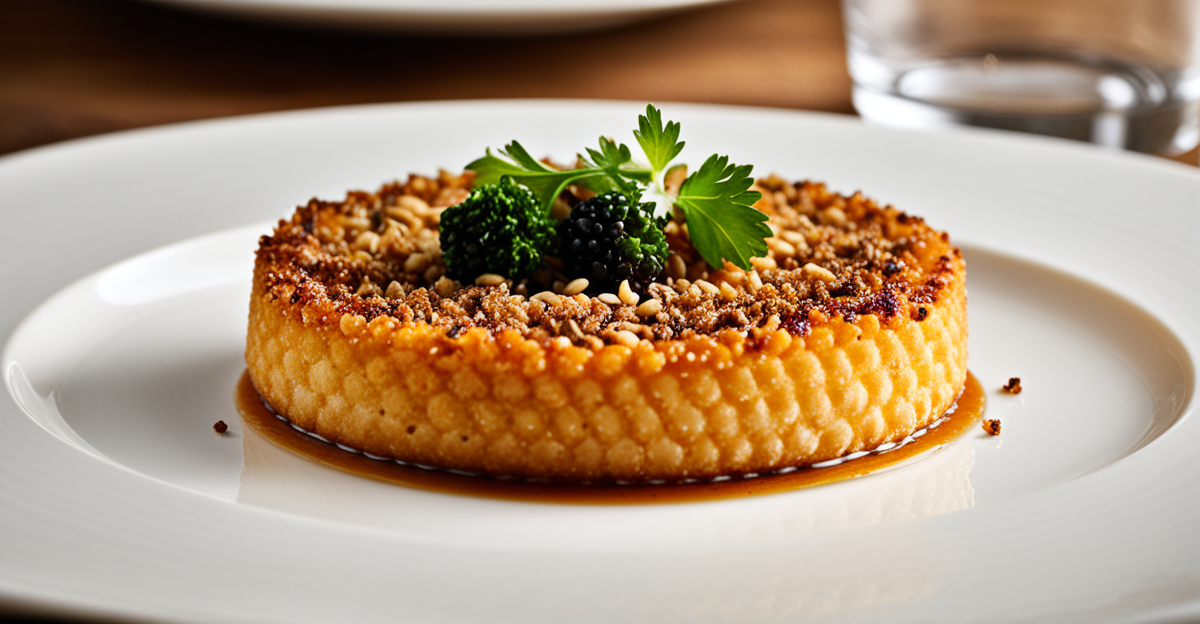Core Elements of British Cuisine Shaping Food Innovation
British cuisine essentials stem from a rich history blending simplicity, local produce, and practicality. Traditional British food is defined by hearty dishes that emphasize robust flavours and comfort. Key ingredients often include root vegetables, various cuts of meat, dairy products such as clotted cream and cheeses, and staples like potatoes and bread. These components form the backbone of British cooking and influence modern culinary interpretations profoundly.
Unique ingredients like lamb, suet, and pork pie fillings have long distinguished British cuisine and inspired chefs to experiment with traditional cooking methods, including slow roasting, steaming, and braising. Such techniques, passed down through generations, impart depth and texture, which contemporary chefs reimagine to create innovative dishes without losing the essence of traditional British food.
Additional reading : What Are the Essential Ingredients for Authentic British Cuisine?
Classic dishes like roast beef and Yorkshire pudding, fish and chips, and shepherd’s pie showcase the importance of combining staple ingredients with straightforward cooking methods. These timeless recipes not only celebrate the heritage of British cuisine essentials but serve as a creative foundation for today’s chefs seeking to balance authenticity with culinary innovation.
Core Elements of British Cuisine Shaping Food Innovation
British cuisine essentials meld history, tradition, and distinctive ingredients to form a culinary foundation that inspires innovation today. Rooted in centuries of agricultural abundance and regional diversity, traditional British food offers a palette of flavors that modern chefs eagerly reinterpret.
Also to read : What Are the Most Popular British Cooking Techniques Today?
At its core, British cuisine relies heavily on key ingredients like root vegetables, hearty meats, and dairy products. Staples such as lamb, beef, and potatoes, paired with subtle herbs and classic condiments like mint sauce or English mustard, define its character. Traditional cooking methods—such as slow roasting, boiling, and baking—capture the essence of these ingredients, preserving depth and texture which contemporary chefs use as a base to create fresh expressions.
Iconic dishes like shepherd’s pie, roast beef with Yorkshire pudding, and full English breakfast illustrate how British cuisine essentials remain influential. These classics not only preserve cultural heritage but also encourage experimentation by inspiring fusion with global flavors. This blend of tradition and creativity keeps British cuisine relevant, fostering culinary innovation grounded in respect for its core elements and timeless techniques.
Modern Food Trends Influenced by British Cuisine
British-inspired food trends are increasingly visible in contemporary cuisine worldwide. Classic British staples like pies, roasts, and fish and chips have evolved beyond tradition, finding new life through culinary innovation and fusion with global flavours. For instance, shepherd’s pie now appears with exotic spices or plant-based fillings, reflecting the adaptability of traditional British food to modern palates.
The gastropub movement exemplifies how British food essentials—such as hearty roasts and locally sourced ingredients—have been redefined to appeal to upscale dining audiences. This trend bridges comfort food with refined techniques, emphasizing seasonal produce and elevating simple dishes without losing their authentic spirit.
Sustainability and local sourcing, deeply embedded in British food culture, play pivotal roles in shaping today’s food landscape. Many chefs and restaurateurs draw from British practices of using whole animals and regional vegetables, supporting environmental responsibility while preserving flavour and nutrition. This approach responds to growing consumer demand for ethically produced food, enhancing British cuisine’s relevance in the modern culinary scene. The fusion of tradition with contemporary values makes British-inspired food trends both innovative and meaningful.
Core Elements of British Cuisine Shaping Food Innovation
British cuisine essentials are deeply rooted in a historical and cultural context shaped by geography, climate, and social traditions. Its defining traits include simplicity, wholesome nutrition, and maximising local produce. Traditional British food relies on key ingredients such as lamb, beef, root vegetables, and dairy, which contribute to its distinctive heartiness.
Unique ingredients like suet and clotted cream, combined with methods such as slow roasting and braising, remain central to British culinary identity. These traditional British food practices foster robust flavours and textures that modern chefs revisit. For instance, techniques perfected in classic dishes like shepherd’s pie or roast beef are adapted to suit contemporary palates, illustrating the dynamic relationship between heritage and innovation.
This interplay between enduring ingredients and cooking approaches informs food innovation, allowing chefs to preserve authenticity while experimenting with flavor combinations and presentation. The result is a continuum where British cuisine essentials fuel creativity, highlighting how time-honoured recipes and components shape today’s culinary landscape with both respect and inventiveness.
Core Elements of British Cuisine Shaping Food Innovation
British cuisine essentials are defined by a history rich in practicality and resourcefulness. Traditional British food highlights key ingredients such as root vegetables, lamb, beef, and dairy, which ground dishes in regional availability and seasonality. These ingredients form the foundation upon which chefs build, bringing depth to cuisine through technique and flavor.
Historical context explains much about the culinary identity of British food. The importance of preserving and stretching resources during times of scarcity contributed to hearty meals focused on nourishment and simplicity. Classic dishes—like roast beef with Yorkshire pudding or shepherd’s pie—exemplify the balance of robust ingredients and straightforward preparation.
Traditional cooking methods remain crucial in shaping food innovation. Techniques such as slow roasting, steaming, and braising not only retain the essence of ingredients but also allow chefs to explore texture and flavor in creative ways. By respecting these methods, modern culinary pioneers honor British cuisine essentials while reinventing dishes to meet contemporary tastes and expectations. This blend of heritage and experimentation drives a dynamic evolution within British-inspired food.
Core Elements of British Cuisine Shaping Food Innovation
British cuisine essentials are deeply anchored in history, defined by simplicity and a focus on wholesome, local produce. Traditional British food emphasizes key ingredients like root vegetables, lamb, and dairy, which shape the rewards of its hearty and satisfying dishes.
Unique ingredients such as suet and clotted cream set British cooking apart, lending distinct flavours and textures to classics like steak and kidney pudding or treacle tart. These traditions persist through cooking methods like slow roasting, braising, and steaming, which extract depth and richness from each dish while preserving the integrity of the ingredients.
Modern chefs draw heavily on these fundamentals to craft innovative offerings. By respecting the traditional British food foundation, they reimagine time-honoured recipes using contemporary techniques or flavour pairings that enhance but never overshadow the original essence. For example, slow roasting remains pivotal for meats, but chefs now experiment with spice rubs or alternative herb blends to refresh familiar profiles.
In short, the historical context, unique ingredients, and enduring cooking methods form a dynamic framework. This framework allows British cuisine essentials to continually inspire creativity while maintaining their authentic flavour and heartiness.
Core Elements of British Cuisine Shaping Food Innovation
British cuisine essentials are characterised by their historical roots in practicality, seasonality, and regional availability. The defining traits of traditional British food emphasise wholesome nourishment and simplicity, reflecting centuries of adapting to a variable climate and agricultural cycles. Key ingredients such as lamb, beef, root vegetables, and dairy form the backbone of this heritage, underpinning the distinctive robust flavours British food is known for.
Unique ingredients like suet and clotted cream play an important role in classical dishes and influence modern chefs seeking to innovate while maintaining authenticity. Classic preparations—including slow roasting, braising, and steaming—are traditional cooking methods that extract depth and richness, preserving the integrity and texture of key ingredients. These methods remain essential in current culinary interpretations.
Modern chefs draw on these traditions by experimenting within this framework, using time-honoured techniques to create dishes that respect the essence of British cuisine essentials while exploring new flavour profiles and presentations. This balance of reverence and creativity keeps British food evolving without losing its core identity.
Core Elements of British Cuisine Shaping Food Innovation
British cuisine essentials reflect a blend of historical pragmatism and regional abundance, shaping the foundation of traditional British food. At its heart, British culinary identity revolves around key ingredients such as lamb, beef, root vegetables, and dairy products, which provide distinct flavours and nutrition. These ingredients are often chosen for their availability and ability to sustain through varied British climates.
Unique components like suet, clotted cream, and specific herb blends have long set British food apart, influencing chefs to retain or reinvent traditional dishes. Classic recipes like shepherd’s pie or roast beef with Yorkshire pudding demonstrate how these staples create hearty, satisfying meals that resonate culturally.
Traditional British cooking methods—slow roasting, braising, and steaming—play a crucial role in enhancing these ingredients’ natural qualities. Such techniques preserve texture and flavor, forming a reliable framework that chefs use to inspire new culinary expressions. By embracing these methods, contemporary chefs maintain authenticity while exploring evolving tastes, driving the ongoing innovation rooted in British cuisine essentials.
Core Elements of British Cuisine Shaping Food Innovation
British cuisine essentials are defined by simplicity, regionality, and wholesome nutrition. The historical context reveals how Britain’s variable climate and agricultural cycles shaped a food culture focused on practical, hearty meals using available key ingredients such as lamb, beef, root vegetables, and dairy. These staples ground traditional British food in robust, comforting flavors that express resourcefulness.
Unique ingredients like suet and clotted cream distinguish British cuisine and influence modern chefs seeking inspiration within tradition. Classic dishes such as shepherd’s pie and steak and kidney pudding showcase how these time-honoured components are combined and elevated through well-established cooking techniques. Slow roasting, braising, and steaming remain pivotal traditional British food methods, extracting deep flavour and preserving the integrity and texture of ingredients.
These traditional cooking methods drive contemporary culinary interpretations by offering a reliable framework. Modern chefs creatively adapt these practices to innovate with new flavor profiles or presentation styles while maintaining the core identity of British cuisine essentials. This balance between reverence for heritage and the desire to evolve ensures British food continues to inspire both authenticity and culinary creativity.








